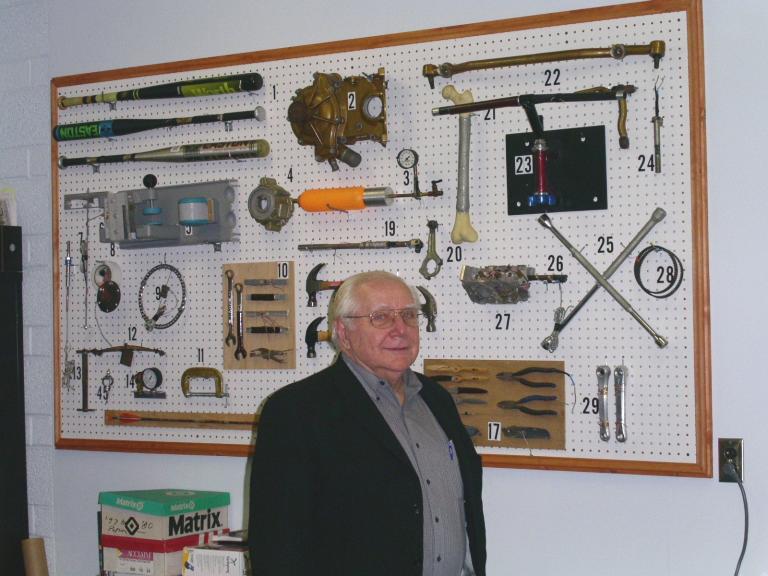
“Force plates measure the force of an explosion, similar to a scale. Strain gauges inside measure tension or compression.”
Doc K used students as an excuse to blow something up again. This time he did it with the blessing, and help, of the Michigan State Police Bomb Squad. (KetteringUniversity- where you can blow stuff up in the name of scientific research!)
In truth, Doc K, also known as Dr. Henry Kowalski, professor of Mechanical Engineering, and four senior students in his Experimental Mechanics class, performed research on detonator cord for the Bomb Squad as the students’ final class project.
They tested the commonly held theory that when blowing up something to open it or crush it (to reduce its danger potential), having water behind the detonator creates a more powerful explosion.
The testing they did on detonator cord (a la the popular Discovery Channel TV show Mythbusters) attempted to prove or disprove the theory. The State Police Forensic Science Division operated on the theory without knowing if it was true or not.
Ryan Gebs, of Preston, Idaho, Kay Bareiss, of Wesensteig, Germany, Michael Pedigo, of Hartland, Mich., and Kyle Kibbey, of Mason, Mich., blew up force plates with detonator cord on Friday, June 12 on the Kettering baseball diamonds.
“Force plates measure the force of an explosion, similar to a scale. Strain gauges inside measure tension or compression,” said Gebs. The students attached the force plates to an oscilloscope to log data for analysis and used a high speed video camera to capture the results visually.
Detective Sergeant Rick Bekemeier, bomb technician and Sergeant Scott Hasse, bomb squad, assisted the students in setting up the tests and managed the detonator cord and explosions.
To test whether water behind the explosion increased the force of the blast, the group fired detonator cord without water and with IV bags lying on top of the cord. The IV bags were used because they provided a compact portable source of water.
“The IV bag holds down the detonator cord,” explained Gebs, “without it the blast goes out in a 360 degree radius. Because the IV holds down the detonator cord it concentrates the blast downward onto the board, intensifying it in that direction,” he added.
According to the data collection equipment, the first blast, without water, exerted about 4,000 pounds of force. The first blast with water was estimated to exert more then 10,000 pounds of force on the board.
The cord without water ripped through the first few layers of the plywood sheet used to protect the force plates, cutting through a few layers. The explosions with water behind them penetrated through four or more layers of the plywood and actually cracked a cement cinder block in half during one blast. Theory proved – there was about six times the penetration into wood with water behind the blast and much better penetration into the cinder block.
Doc K said he would like to secure the donation of a newer high speed video camera because he wants to see how paint balls explode. He’ll probably claim THAT’S in the name of scientific research, too.
Written by Dawn Hibbard
810.762.9865
dhibbard@kettering.edu